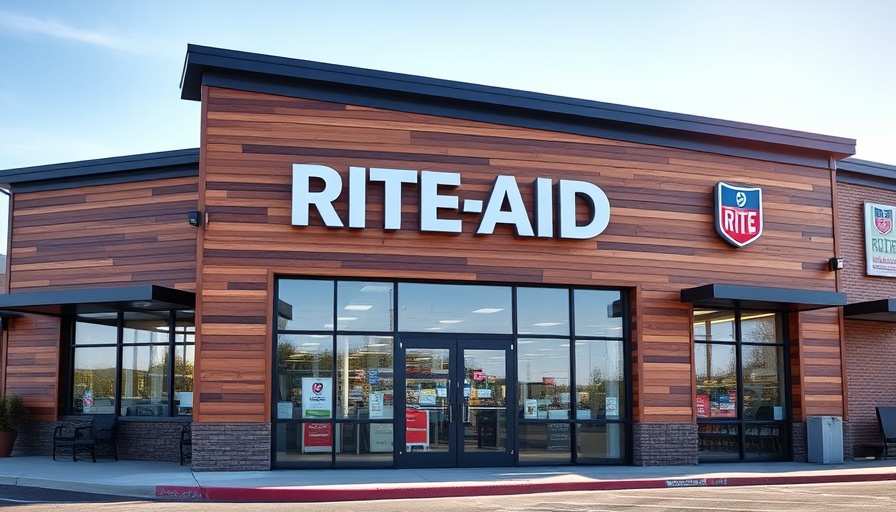
Rite Aid Bankruptcy: A Significant Shift in Retail Pharmacy
In a pivotal move that could reshape the U.S. retail pharmacy landscape, a bankruptcy judge recently approved the sale of Rite Aid's pharmacy assets to major players, including CVS and Walgreens. This decision comes amidst Rite Aid's second bankruptcy filing in just two years, a sign of the challenging environment faced by traditional brick-and-mortar pharmacies. With financial pressures mounting from flat reimbursement rates and increasing competition from online disruptors like Amazon, Rite Aid's struggle reflects broader trends within the healthcare sector, making this an important event for consumers and industry stakeholders alike.
Understanding the Implications of Asset Sales
The asset sales, which include pharmacy locations and prescription files, are expected to provide an opportunity for expansion for CVS, the largest drugstore chain in the nation, which has already begun integrating Rite Aid’s operations into its own. This acquisition will not only help CVS expand its market presence but also streamline operations by onboarding Rite Aid customers. Regulatory approval is pending, but the potential outcomes for both the companies involved and consumers are significant.
What This Means for Consumers
For consumers, these developments could indicate a shift in service availability, pharmacy accessibility, and competition. As CVS moves to absorb Rite Aid’s customer base, there's a chance for enhanced services and potentially more competitive pricing. However, the transition may also bring uncertainty, particularly for Rite Aid pharmacies and their employees. CVS has expressed a commitment to hiring Rite Aid staff who may lose their jobs, a hopeful sign for those impacted by these changes.
The Future of Retail Pharmacies
As Rite Aid exits the market, the evolving landscape raises questions about the future of retail pharmacies. Will consumers benefit from improved service delivery through larger chains? Or will this consolidation lead to a decrease in personalized care? These are crucial considerations for consumers, especially for those managing chronic illnesses and seeking personalized treatment options.
Conclusion: Staying Informed and Engaged
The approval of Rite Aid's asset sales is a significant marker in the ongoing evolution of retail pharmacy. As consumers, staying informed about these changes can empower better choices regarding health and wellness services. Whether you're a chronic disease patient or someone seeking eco-conscious solutions, understanding these transitions within the pharmacy landscape can help you navigate your healthcare needs more effectively.
 Add Row
Add Row  Add
Add 




 Add Row
Add Row  Add
Add 



Write A Comment